Weigela "Bristol Ruby": description, planting and care
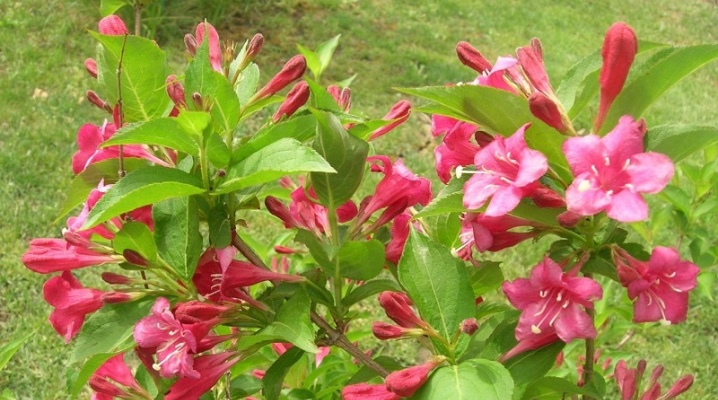
Weigela "Bristol Ruby" attracts gardeners with its bright ruby color, making the shrub a catchy accent of any landscape project. Other benefits of culture include its good frost resistance, as well as a rather long flowering period in the hottest seasons.
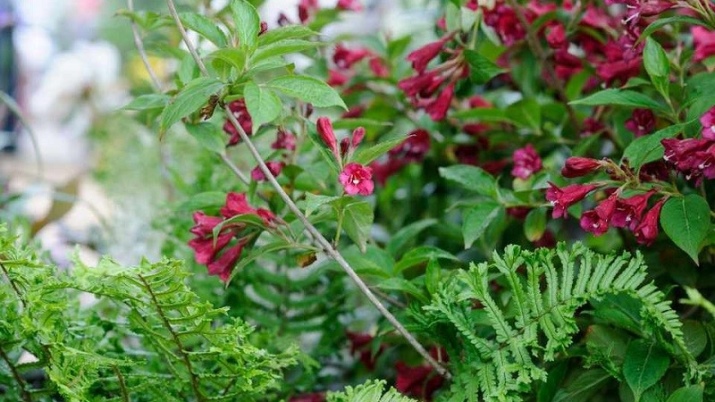
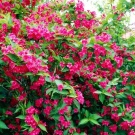
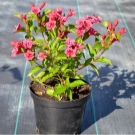

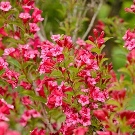

Peculiarities
The Bristol Ruby hybrid weigela is a fairly dense and well-grown bush, the branches of which naturally hang down to the ground. This plant belongs to the honeysuckle family and is found naturally in the eastern and southeastern regions of Asia. Description Bristol Ruby contains information that the height of the specimens reaches 2.5 meters, and sometimes the width is 3 meters. Nevertheless regular pruning and shaping of the crown allows you to reduce the parameters to a meter in height and the same width. In a year, the height of the weigela increases up to 50 centimeters.
The culture blooming in June or July pleases gardeners for from two weeks to almost 30 days. Opened buds, reminiscent of bells, form inflorescences of 3-6 pieces. In most cases, Bristol Ruby re-blooms at the end of summer, but in smaller volumes. Red weigela changes its color from a delicate raspberry to a bright ruby shade. At the end of the second stage of flowering, the place where the inflorescences were located is covered with capsules filled with seeds. It should be immediately mentioned that in the shade, the plant blooms very little.

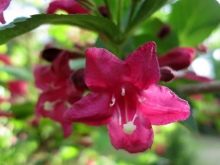
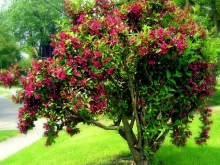
Weigela leaves have a rich green color and a jagged border. The plates remain on the bush almost until the end of autumn. Culture has good frost resistance and is able to withstand temperatures down to almost -35 degrees. Nevertheless, in the presence of temperature jumps, as well as thaws, the shrubbery needs at least minimal protection. Rather badly "Bristol Ruby" feels itself in drafts. Hybrid weigela can live up to almost 50 years, but only with quality care and adherence to agricultural technology.
In landscape design, weigela of this variety can be used for various purposes. The height of the shrub allows it to be used to create a hedge, but it is imperative to maintain the same and unchanging gap between the individual elements. One or two shrubs, along with other low-growing plants, create the perfect composition at the edge. Weigela goes well with trees of sufficient height.
A single planting is recommended for small areas or those that are already abundantly planted with other plants.
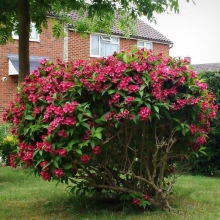
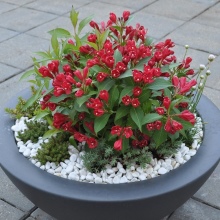
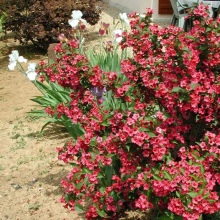
How to plant?
Landing "Bristol Ruby" in open ground begins with choosing the right place. It is recommended to carry out the procedure in the spring - from March to April, before flowering, or in an emergency in the fall, but being prepared for the fact that the seedlings may die in winter. The area should be well lit and not allow the wind to harm the plant. Besides, it is important that between the bush and the fence, the wall of the house or other plantings, there are one to two free meters.
The depth of the hole being formed is 50 centimeters, and the diameter reaches almost 70 centimeters. The soil should be light and fertile, with neutral acidity or slightly alkaline.The bottom is covered with drainage, combined from gravel, pieces of brick or expanded clay.
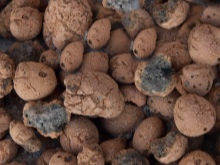
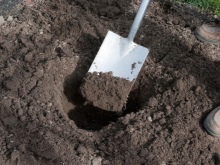
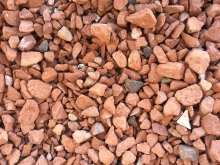
The soil mixture for filling the pit is formed from sand, humus and turf, taken in equal proportions and well mixed. It should be mentioned that complex fertilizers can also be added to the hole... The notch is filled about 2/3, after which the plant is carefully transferred inside along with an earthen lump. It is important to ensure that the root collar is at ground level. The hole is filled with the rest of the soil mixture, after which the surface is carefully compacted.
The Bristol Ruby is irrigated immediately in large quantities using one or two standard buckets. As soon as the liquid is absorbed, it is necessary to mulch. As a rule, either peat, or black soil, or a mixture of pieces of bark and sawdust are used for this purpose.
The first month, watering is required about once a week, accompanying irrigation by loosening or mulching.
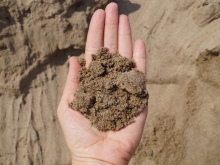
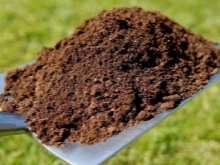
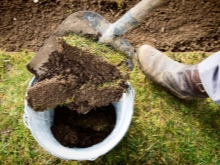
How to take care of it properly?
Caring for the Bristol Ruby weigela is relatively simple. Watering the bush is carried out in accordance with weather conditions. For example, if the summer turned out to be dry, then weigela will need to be watered every 2 weeks in the amount of 2-3 standard buckets.
Successful cultivation is impossible without regular loosening. The first procedure is carried out in early spring, when the soil warms up enough. The tool should go about 8-10 centimeters deep, and the loosening itself in the spring months should be carried out at least once a month. In summer, the surface is loosened after each irrigation or rain. Additionally occurs mulching with peat.
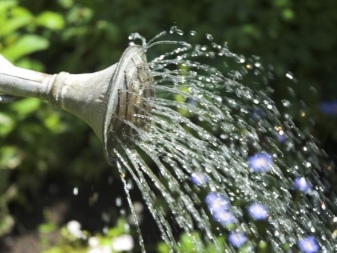

In autumn, loosening continues until October, when the final procedure is carried out. The area near the trunk is necessarily mulched with peat for protection in the winter.
For weigela, fertilization is also essential. In early spring, when the soil warms up, it is necessary to use complex mineral compositions or a mixture of 20 grams of urea, 10 grams of superphosphate and 10 grams of potassium per square meter. The second time, fertilizer is applied at the end of flowering using potassium alone. If fertilizers were applied during planting, then in the summer when the buds swell, it makes sense to add 30 grams of phosphorus and potassium per square meter.
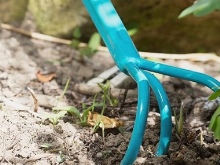


Pruning shrubs for sanitary purposes is necessary every spring as soon as the snow melts. "Bristol Ruby" is freed from diseased, broken or frozen branches... The wounds must be treated with a special ointment to avoid the occurrence of the disease. In addition, about once every 2 or 3 years, it is customary to engage in crown formation, removing more than half of the shoots.
Weigela care also includes protection from cold weather. It is most convenient to use for this purpose agricultural canvas to cover the crown, as well as pine branches to preserve the roots.
In addition, it is important to carry out hilling by creating a 20-centimeter slide and covering the soil with peat or compost.
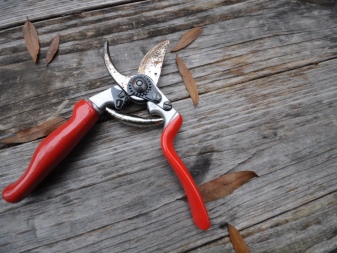
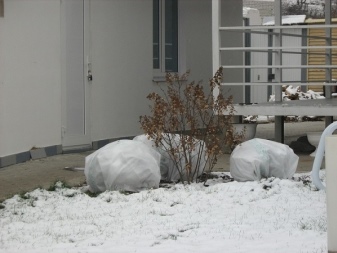
Reproduction methods
Most often, weigela reproduces using cuttings, since this method is quite simple. Green twigs are pruned in early June, when the lignification process has just begun. Gardeners recommend sticking to a length of 10 centimeters and making sure that there are two leaves on each cutting. All the leaves break off, after which the resulting stalk is removed for 2-3 hours in water. It is not forbidden at this stage to use a small amount of a root stimulant, for example, "Heteroauxin", taken in an amount of 150 milliliters per liter of ordinary water. It is better to keep the soaked petioles in a darkened room, the temperature of which is approximately 20 degrees Celsius.
Next, a mixture of turf and humus is laid in a small container.The stalk is deepened by about 2 centimeters, after which the entire surface of the earth is covered with sand, ideally collected from the river. Additionally, it is recommended to cover the weigel with an ordinary glass to form a greenhouse effect. Cuttings are irrigated in the morning and in the evening every day, and also every 3 days are treated with a weak solution of potassium permanganate. When the sprouts emerge from the soil, the glass can be removed during the day. As soon as the length of the plant reaches 5 centimeters, you can transplant it into a separate pot.
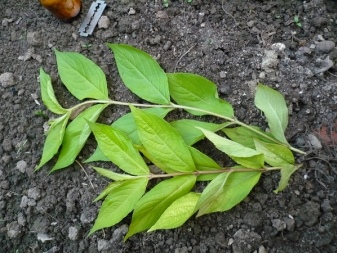
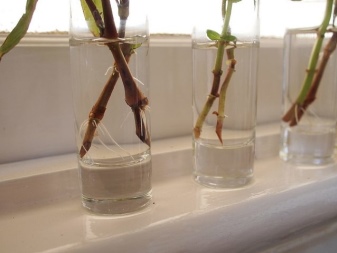
Next, you will need to wait a whole year before landing on open ground. In the summer, the pots are allowed to be put outside, and in the winter they can be stored in a cool room. Purchased seedlings are immediately placed in their permanent habitat. Some experts are able to use lignified shoots for reproduction, but such a shrub will bloom in at least 5 years. Such cuttings are cut in the middle of summer, before the weigela is covered with opened buds.
It is not accepted to propagate "Bristol Ruby" by seeds, since the variety is hybrid... However, you can still try. The seeds must be used within 12 months of being harvested, otherwise they will lose their freshness. The sowing material is to be planted in the spring, and you can do without any additional processing.
First, it is better to plant the seeds in a container covered with cling film or glass, and then, after waiting for the second pair of leaves to appear, plant them in separate pots.
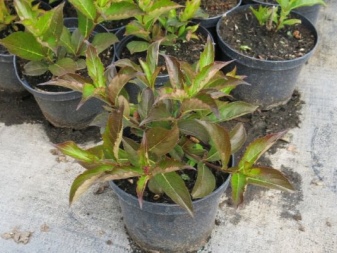
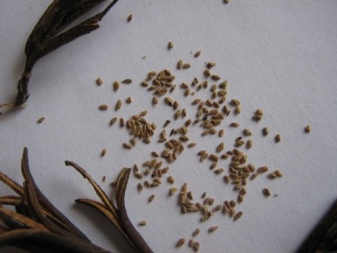
Diseases and pests
Weigela of this variety possesses good resistance to most diseases. And the emerging diseases are cured rather quickly. with the help of dissolved laundry soap, potassium permanganate or "Karbofos". No less effective from improvised means are considered infusions of garlic or onions, chopped tobacco or wormwood. One percent solution "Topsina" allows you to heal weigela from rust or decay that has arisen. As a preventive measure, it is recommended regular cleaning of falling leaves.
Of the pests, weigelu "Bristol Ruby" is most often attacked by aphids, which feed on the juices of leaf plates and the buds themselves, and also cover the surface with sticky mucus. When this insect appears, it is necessary to use a mixture of laundry soap and potassium permanganate or Karbofos. From folk remedies, tobacco, garlic or hot pepper are most often used.

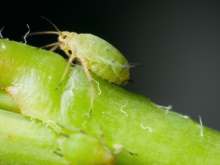
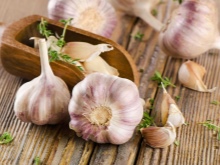
In the next video, you will find additional information on planting and caring for the weigela.



































































The comment was sent successfully.